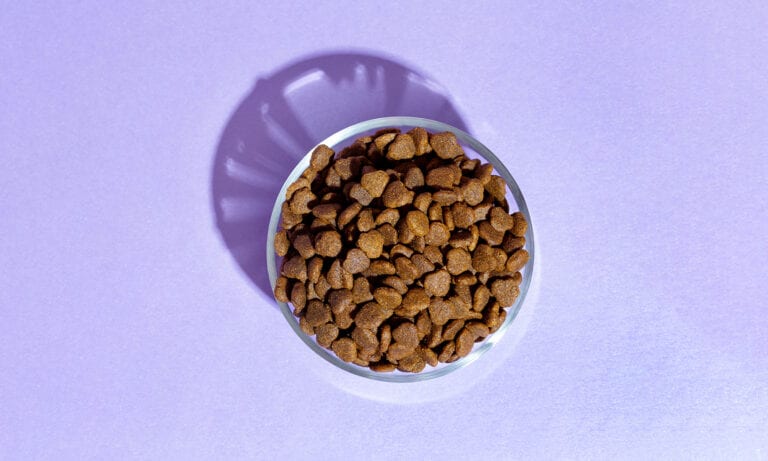If you are the pet parent of a house cat who only moves to perform basic life functions like eating and going to the litter box, then we need to talk about his cat care and cat nutrition. Unfortunately, obesity trends in the United States today are on a serious upswing for both humans and pets, and eating too much of the wrong foods is not the only culprit. Lack of exercise turns those extra calories into extra pounds quicker than you would like.
For dogs, it can seem easy to help them lose weight by cutting back on treats and walking them outside more often. But to get an overweight house cat to reach a healthy cat weight can seem like a daunting and difficult task, especially if they are used to free-feeding and lying around all day.
Here are some cat care and healthy cat diet tips to help get your kitty back into shape:
1. Get Your House Cat Moving
Encourage playtime and exercise by providing your kitty with a cat tree, like the Frisco 52-in cat tree, to give him something to jump on as well as playing with him using cat interactive toys.
The idea is to get your cat moving and active, which can help him reach his proper weight. In some cases, lifestyle changes are not enough and the actual cat food and the amount of food you are feeding may be horrible weight gain triggers.
2. Learn the Proper Diet To Improve Cat Health
A healthy cat diet is comprised of only 200 calories a day. Yes, it seems like very little, but really, that’s all they need for proper cat nutrition. You will quickly realize you might be doubling that by the end of the day if you are feeding them wet and dry cat food as well as offering high-calorie treats. Combine that with a low-quality diet, and you have an even bigger cat health problem—an overweight cat with an unhealthy coat, which causes more hairball-related digestive issues.
Feeding few and smaller meals versus a single oversized meal each day can help get your cat on the right track towards a healthy cat weight. You may feel like the evil parent who is telling their beloved fur baby “No more food!,” but eventually, you’ll realize that a thinner cat is a healthier, happier cat, and that’s what matters most.
3. Try an Indoor Cat Formula
Various pet food brands offer indoor cat formulas that have lower calorie content and hairball-reducing ingredients to help nourish their skin and coats, help them digest hairballs easier and improve their overall cat health. The good news is that these formulas do not need a prescription, and for overweight cats, they might be enough to help them shed a few pounds and prevent those 2 a.m. hairball-hacking sessions. Of course, check the label and make sure to only feed 200 calories a day. I recommend diets such as Royal Canin, Hill’s Science Diet and Purina ProPlan indoor formulas.
In some cases, a change in cat nutrition using different over-the-counter food formulas may not be enough to achieve a healthy cat weight, especially if your cat is obese, so please consult your cat’s veterinarian to see if a prescription weight loss food is needed.

Share:














